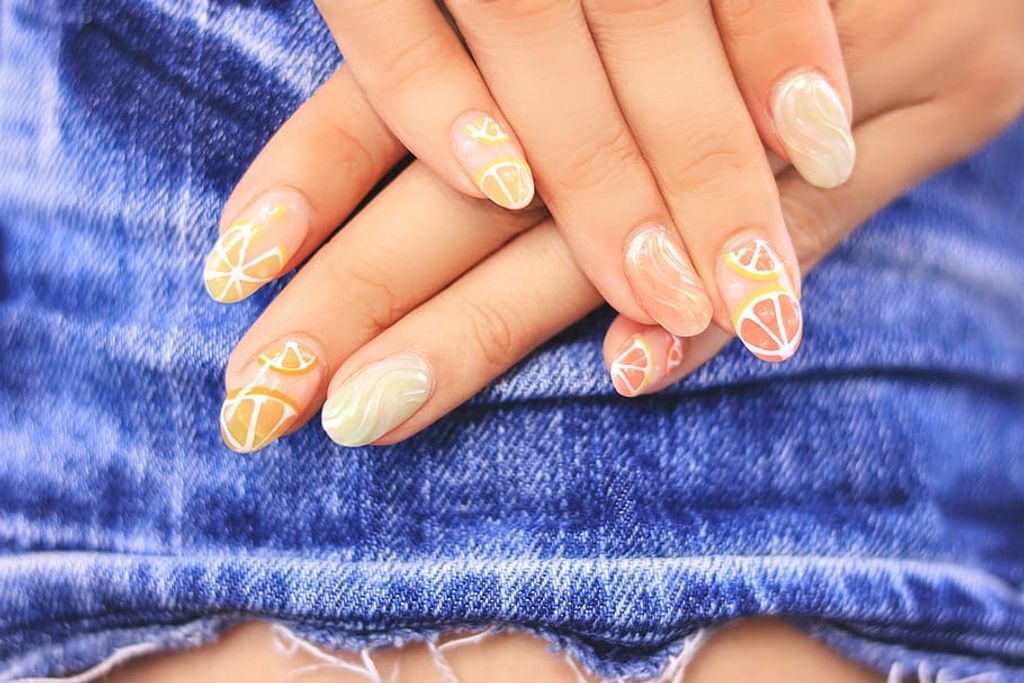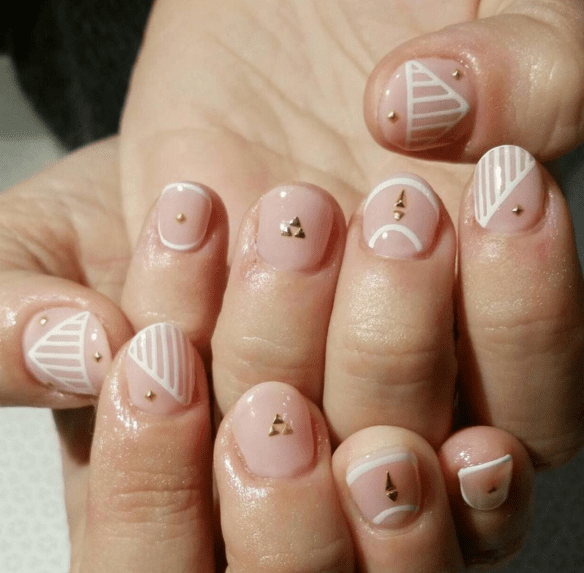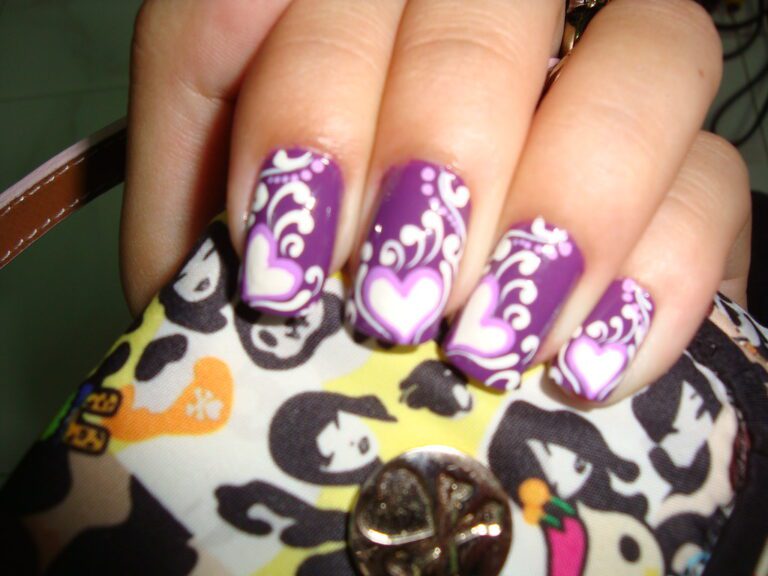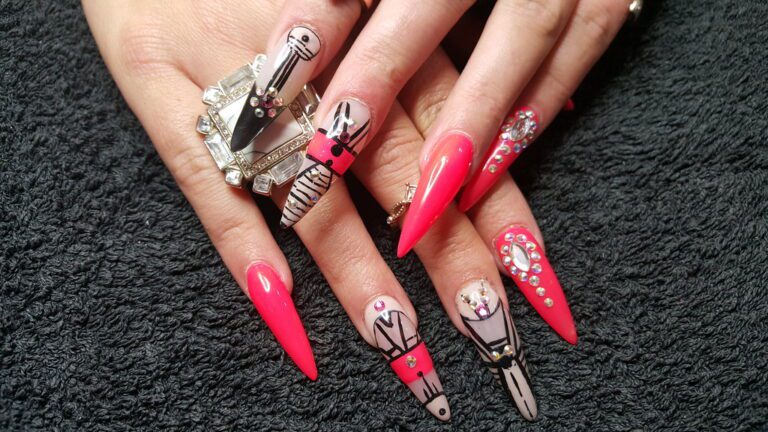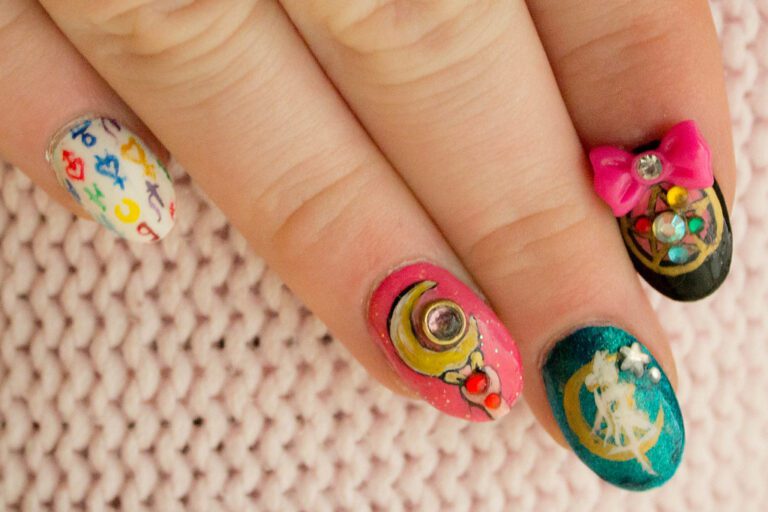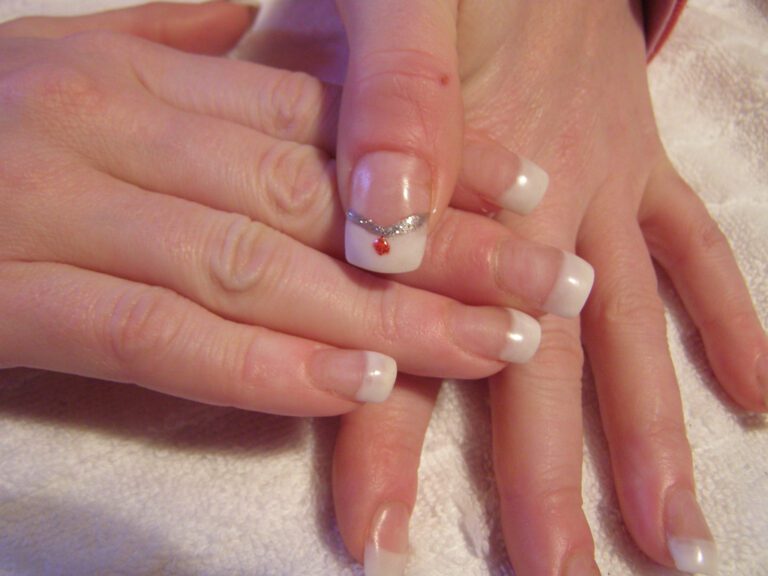“Yellow Warning: When Nails Turn Yellow”
Yellow nails can be a cause for concern and may indicate an underlying issue. From fungal infections to cosmetic consequences, understanding the causes, symptoms, and treatment options for yellow nails is essential. This article aims to shed light on the potential causes of yellow nails, the associated symptoms, diagnosis, treatment options, prevention strategies, and the psychological impact of nail discoloration.
Key Takeaways
- Yellow nails can be a sign of fungal infections, nail polish staining, or underlying medical conditions.
- Changes in nail texture and associated symptoms should not be ignored.
- Diagnosis of yellow nails involves medical history, physical examination, and laboratory tests.
- Treatment options include over-the-counter remedies, prescription medications, and lifestyle and home care strategies.
- Proper nail hygiene, choosing the right nail products, and seeking professional care are essential for preventing yellow nails.
Unveiling the Causes of Yellow Nails

Fungal Infections: A Common Culprit
Fungal infections are among the primary reasons for nails turning yellow. These infections, caused by various fungi, including dermatophytes, yeasts, and molds, can lead to the nail becoming thick, discolored, and sometimes painful. The condition, known medically as onychomycosis, is not just a cosmetic issue but can also signify deeper health concerns.
The risk of developing a fungal nail infection increases with age, exposure to moist environments, and compromised immunity. Here are some common factors that contribute to the susceptibility of fungal infections:
- Frequent exposure to water or damp areas
- Wearing tight, non-breathable footwear
- Previous nail injury or infection
- Underlying health conditions, such as diabetes
Tip: Keeping your feet dry and practicing good foot hygiene can significantly reduce the risk of fungal infections.
Treatment for fungal nail infections often involves antifungal medications, either topical or oral, depending on the severity of the infection. It’s important to consult a healthcare provider for an accurate diagnosis and appropriate treatment plan.
Nail Polish Staining: Cosmetic Consequences
The allure of colorful nail polish is undeniable, but frequent use can lead to unintended cosmetic consequences, such as yellowing of the nails. This discoloration is often due to the dyes and chemicals present in nail polish, particularly darker shades. Over time, these substances can penetrate the superficial layers of the nail, leaving behind a stubborn stain.
Prevention is key when it comes to nail polish staining. Here are a few tips to keep in mind:
- Always apply a clear base coat before using colored polish to create a protective barrier.
- Limit the use of dark nail polishes and opt for lighter shades when possible.
- Give your nails a break between polish applications to allow them to breathe.
Tip: If you notice yellowing, consider giving your nails a polish-free period to recover their natural color.
While nail polish stains are typically harmless, they can mask the symptoms of more serious conditions. If yellowing persists despite taking preventive measures, it may be wise to consult a healthcare professional.
Underlying Medical Conditions: Signals to Watch For
When nails turn yellow, it’s not always a superficial issue. Sometimes, this discoloration is a signal of an underlying medical condition that may require attention. Conditions such as diabetes, lymphedema, and lung diseases can manifest in the form of yellow nails. It’s essential to be vigilant and consider other symptoms that may accompany the change in nail color.
Psoriasis and thyroid disorders are also known to cause nail abnormalities, including yellowing. If you notice other changes in your nails, such as thickening or a change in growth pattern, it may be indicative of a more serious health issue. For instance, ‘Ram’s horn nails‘ or onychogryphosis, is characterized by thickening and yellowing of the nails, which then grow long and curl around.
Remember: Yellow nails accompanied by other symptoms like swelling, pain, or changes in nail shape should prompt a visit to a healthcare provider.
It’s crucial to not self-diagnose as many of these conditions require professional medical assessment and treatment. Keeping an eye out for these signals can lead to early detection and better management of the potential health problem.
Symptoms and Signs: Beyond the Yellow Hue

Changes in Nail Texture
Changes in nail texture can be indicative of underlying health issues. Irregularities such as brittleness, pitting, or ridges may signal the presence of certain conditions. Here’s a brief overview of the potential implications:
| Texture | Possible Implications |
|---|---|
| Brittle | Nutrient deficiencies, thyroid disorders |
| Pitted | Psoriasis, eczema |
| Ridges | Arthritis, iron deficiency |
It’s important to pay attention to these changes and consult a healthcare professional if you notice any abnormalities. Early detection and intervention can lead to better outcomes for nail health and overall well-being.
Associated Symptoms to Be Aware Of
While a yellow hue is the most obvious sign of nail issues, other symptoms can accompany this discoloration, indicating a deeper problem. It’s important to observe any changes in the texture or shape of your nails, as these can be telltale signs of an underlying condition.
- Thickening or thinning of the nails
- Brittle, cracked, or split nails
- Distortion in the shape of the nail
- Pain or discomfort around the nails
- The appearance of white or dark streaks
These symptoms may not occur in isolation and could be accompanied by other health indicators. For instance, nail changes in rheumatoid arthritis may include pitting and brittleness, while onychomycosis, a fungal infection, often starts with a white or yellow-brown discoloration before progressing to more serious symptoms like pain or infection.
Tip: If you notice any of these associated symptoms, especially if they persist or worsen, it’s advisable to seek medical attention promptly to determine the cause and appropriate treatment.
Diagnosis: Identifying the Root Cause

Medical History and Physical Examination
When diagnosing yellow nails, a thorough medical history and physical examination are pivotal. Physicians will inquire about any recent changes in medication, exposure to chemicals, or a history of respiratory issues, which could be indicative of Yellow Nail Syndrome (YNS). A physical examination will focus on the nails’ appearance, including color, texture, and growth patterns.
- Considerations during the examination may include: *
- The duration and progression of nail discoloration
- Any accompanying symptoms such as swelling or pain
- Signs of respiratory or lymphatic involvement
Tip: Be prepared to discuss your full medical history, including any family history of nail disorders, as this information can be crucial for an accurate diagnosis.
Laboratory Tests: Confirming the Diagnosis
Once a thorough medical history and physical examination have been conducted, laboratory tests play a pivotal role in confirming the diagnosis of yellow nails. These tests are essential in distinguishing between various causes such as fungal infections, underlying medical conditions, or nutrient deficiencies.
- KOH test: A simple test where a sample of nail debris is placed in potassium hydroxide to reveal fungal elements.
- Culture: To identify the specific type of fungus or bacteria, a nail clipping is cultured.
- Blood tests: These can uncover signs of systemic diseases that may manifest as nail discoloration.
Tip: Always consult with a healthcare professional before interpreting laboratory results, as they can provide context and expertise that is crucial for an accurate diagnosis.
The results of these tests guide the healthcare provider in formulating a targeted treatment plan. It is important to address the root cause to effectively treat yellow nails and prevent recurrence.
Treatment Options for Yellow Nails

Over-the-Counter Remedies
When addressing the issue of yellow nails, a variety of over-the-counter (OTC) remedies are available that can be both convenient and effective. These treatments often include antifungal creams, ointments, and nail polishes designed to combat the most common cause of yellow nails: fungal infections.
Antifungal agents, such as clotrimazole and tolnaftate, can be applied directly to the affected nails following the instructions on the packaging. It’s important to maintain consistency in application to see results. For those seeking a more natural approach, products containing eucalyptus oil have been recommended for their efficacy in treating toenail fungus.
Tip: Always clean and dry your nails thoroughly before applying any OTC treatment to ensure maximum absorption and effectiveness.
In addition to antifungal treatments, there are nail-strengthening polishes and creams that can help restore the natural color and health of your nails. Remember, while OTC remedies can be effective for mild to moderate cases, persistent or severe discoloration may require medical attention.
Prescription Medications
Prescription medications are often recommended for severe cases of yellow nails caused by fungal infections. Terbinafine is a common antifungal medication used to treat fungus infections of the scalp, body, groin, and feet. It belongs to the group of medicines called antifungals. It is important to consult a healthcare professional before starting any prescription medication. In addition to Terbinafine, other prescription medications may be prescribed based on the severity and underlying cause of the yellow nails. It’s crucial to follow the prescribed dosage and duration of the medication to ensure effective treatment. Patients should be aware of the potential side effects of prescription medications and report any adverse reactions to their healthcare provider.
Lifestyle and Home Care Strategies
When it comes to home care strategies for yellow nails, it’s essential to prioritize nail hygiene. This includes keeping your nails clean and dry, avoiding prolonged exposure to water, and using moisturizers to prevent dryness. Additionally, consider using nail products that are free from harsh chemicals and irritants, as these can contribute to nail discoloration. Lastly, if you notice any persistent changes in your nails, it’s important to seek professional care for a thorough evaluation and personalized recommendations.
For those dealing with yellow nails, implementing these strategies can significantly improve nail health and appearance. By maintaining proper nail hygiene and making informed choices about nail products, individuals can take proactive steps to address and prevent yellow nail discoloration.
Tip: Prioritize nail hygiene and choose nail products carefully to promote healthy nails and prevent discoloration.
Prevention: Keeping Your Nails Healthy

Proper Nail Hygiene
When it comes to proper nail hygiene, it’s essential to keep your nails clean and dry, avoiding prolonged exposure to water. Practice good nail hygiene by trimming nails straight across and using a moisturizer regularly. Additionally, nails need moisturizing to keep them flexible. The best time to apply lotion is immediately after washing the hands and after taking a bath or shower. Remember, healthy nails start with good hygiene practices.
Choosing the Right Nail Products
Selecting the appropriate nail products is crucial for preventing discoloration and maintaining nail health. Opt for nail polishes that are free from harsh chemicals like formaldehyde, toluene, and dibutyl phthalate, which can contribute to yellowing. Quality matters when it comes to the brands you choose.
When shopping for nail care items, consider the following points:
- The reputation of the brand for safety and quality.
- Whether the product is formulated for sensitive skin, if applicable.
- The ingredient list, avoiding those with known harmful substances.
Tip: Always apply a clear base coat before using colored polish to protect your nails from staining.
Remember, the best nail polish isn’t just about the color or the finish; it’s about how it cares for your nails in the long term. Regularly rotating your nail polish brands can also prevent overexposure to any one brand’s specific formula, which might be beneficial if you’re prone to reactions or discoloration.
When to Seek Professional Care
While many cases of yellow nails can be addressed with home care and over-the-counter treatments, certain situations warrant professional attention. If you notice persistent discoloration despite trying various remedies, or if your nails exhibit additional worrying symptoms, it’s time to consult a healthcare provider.
- Persistent yellowing despite home treatment
- Signs of infection such as redness, swelling, or pain
- Sudden changes in nail shape or thickness
- Symptoms that spread beyond the nail, like skin rashes
Tip: Early intervention by a professional can prevent complications and ensure effective treatment, especially in cases of underlying health conditions.
Seeking professional care is particularly crucial if you have pre-existing medical conditions or if you experience systemic symptoms such as fever or fatigue. A specialist can provide a comprehensive evaluation and tailor a treatment plan to your specific needs, ensuring the health and beauty of your nails are restored.
The Psychological Impact of Nail Discoloration

Social and Emotional Considerations
Nail discoloration can have a significant impact on an individual’s emotional well-being. It may lead to feelings of self-consciousness and embarrassment, especially in social settings. Additionally, the visible changes in nail appearance can affect a person’s self-esteem and confidence. Coping with these emotional challenges is an important aspect of managing nail discoloration.
Coping Strategies for Affected Individuals
Coping with the psychological impact of nail discoloration can be challenging for affected individuals. It’s important to acknowledge the emotional toll that yellow nails can take and to seek support when needed. Understanding that nail discoloration is a common issue can help in coping with the associated emotions. Additionally, finding effective coping strategies and seeking professional care can greatly improve the psychological well-being of individuals dealing with this condition. Remember, you are not alone in this journey, and there are resources available to support you.
Nail discoloration can have a significant impact on a person’s mental well-being. It can lead to feelings of self-consciousness and embarrassment, affecting one’s confidence and self-esteem. At NAILinspire.com, we understand the psychological effects of nail discoloration and offer a wide range of resources to help you overcome these challenges. From expert advice to inspiring nail art designs, we are dedicated to supporting you on your journey to beautiful, healthy nails. Visit NAILinspire.com today and discover the ultimate online nail art design library.
Frequently Asked Questions
What are the common causes of yellow nails?
Yellow nails can be caused by fungal infections, nail polish staining, and underlying medical conditions.
Are yellow nails a sign of a serious health problem?
In some cases, yellow nails can be a sign of an underlying medical condition. It’s important to consult a healthcare professional for proper diagnosis.
How can I prevent my nails from turning yellow?
Proper nail hygiene, choosing the right nail products, and seeking professional care when needed can help prevent nails from turning yellow.
What are the treatment options for yellow nails?
Treatment options include over-the-counter remedies, prescription medications, and lifestyle and home care strategies.
Can yellow nails have a psychological impact?
Yes, yellow nails can have social and emotional implications. It’s important to address the psychological impact and seek support if needed.
When should I seek professional care for yellow nails?
If you notice persistent yellow discoloration of your nails, changes in nail texture, or associated symptoms, it’s advisable to seek professional care for proper evaluation and treatment.

